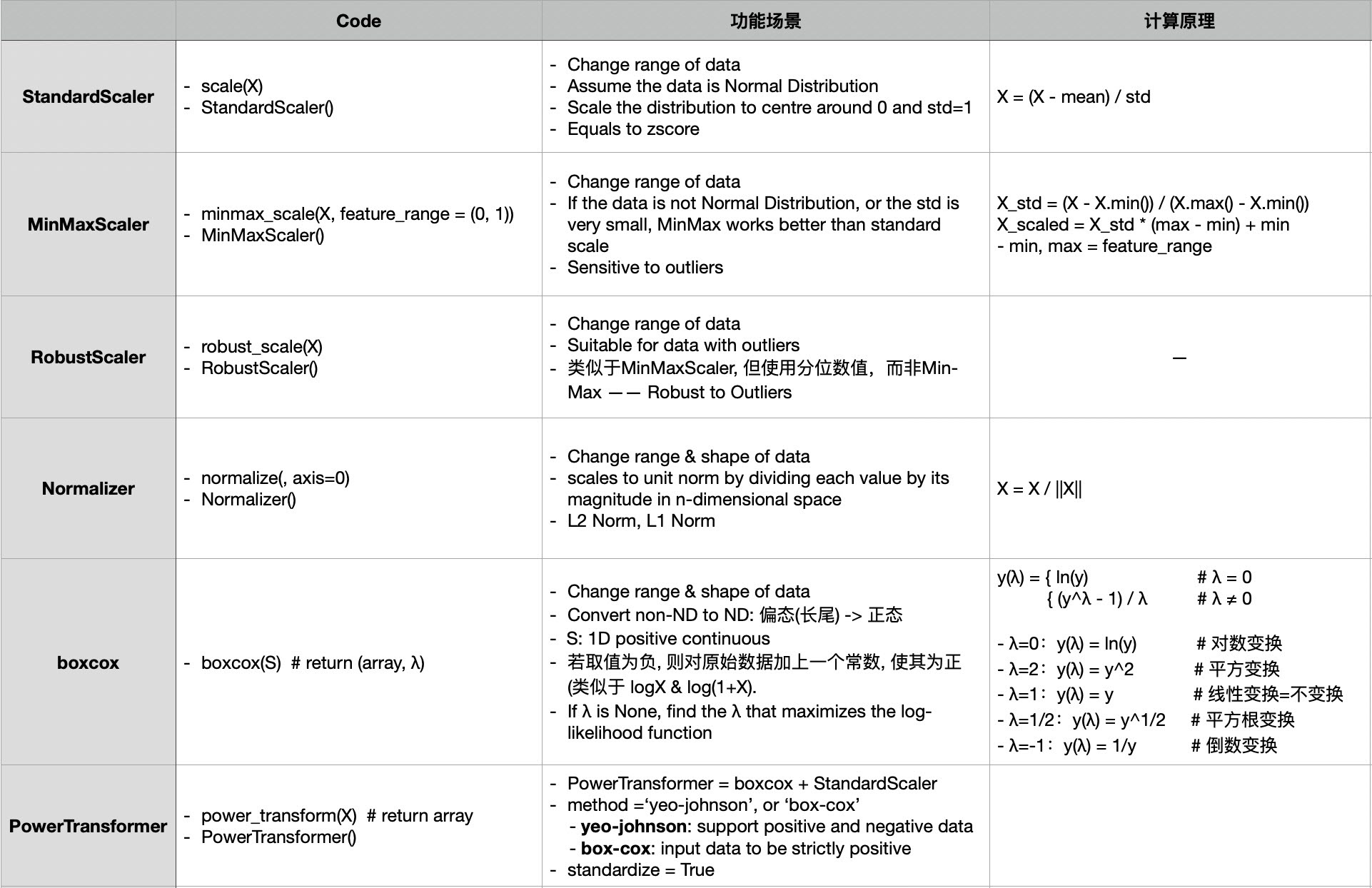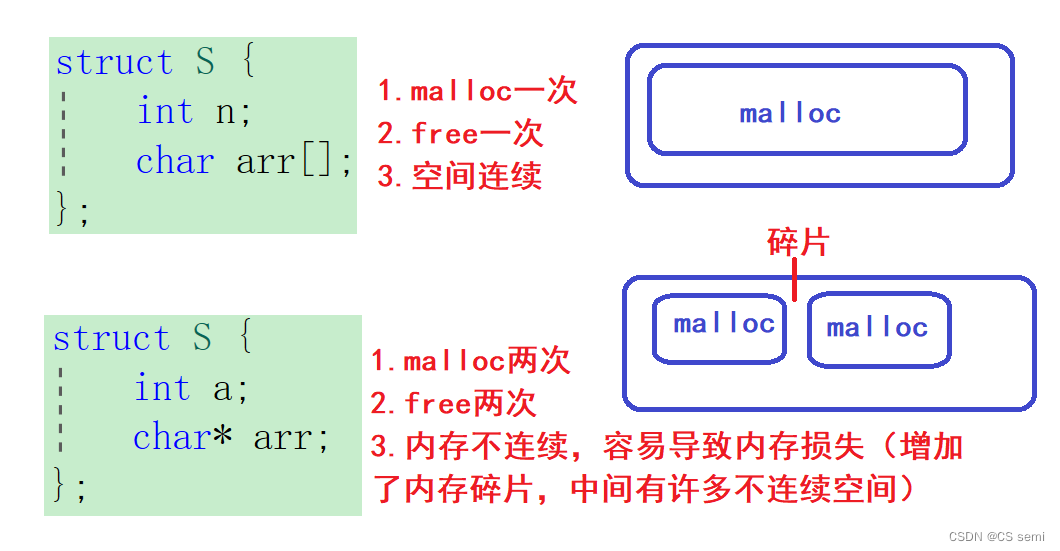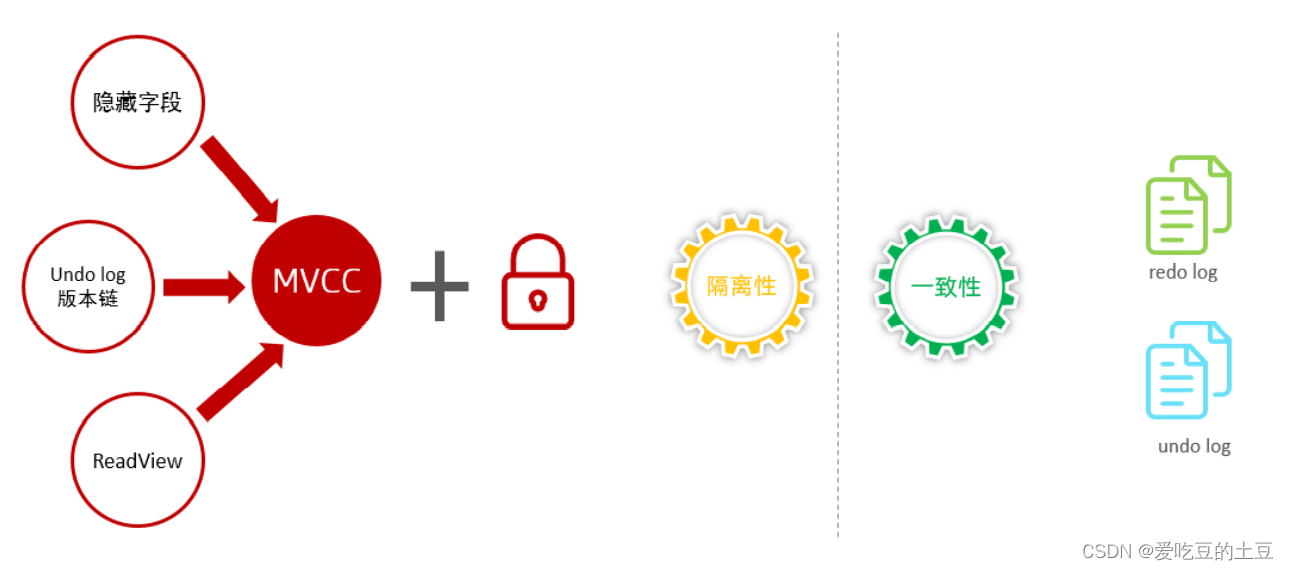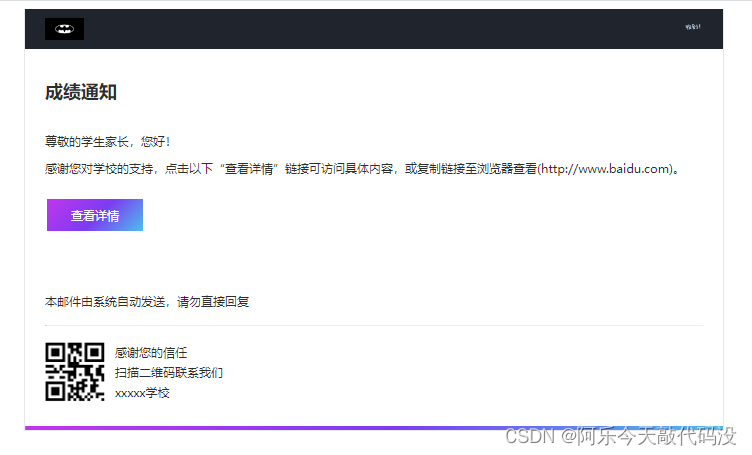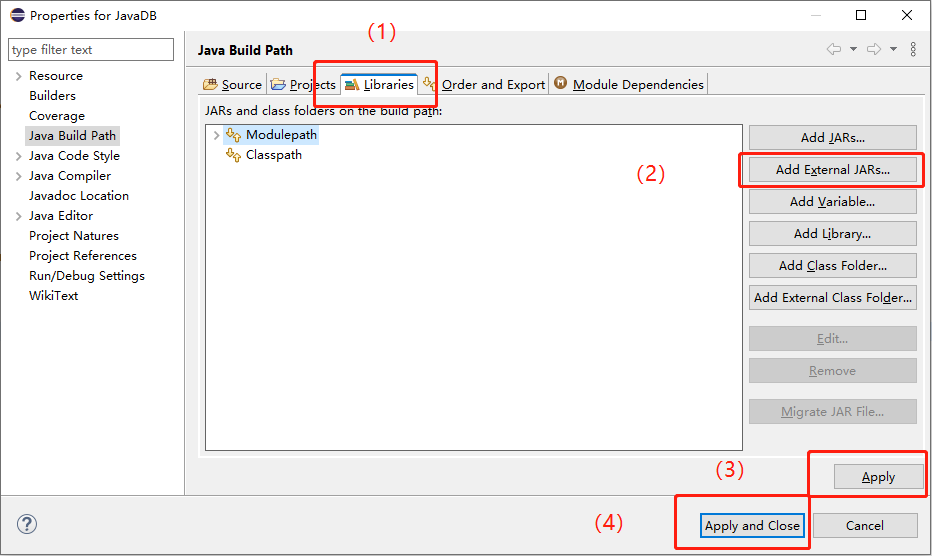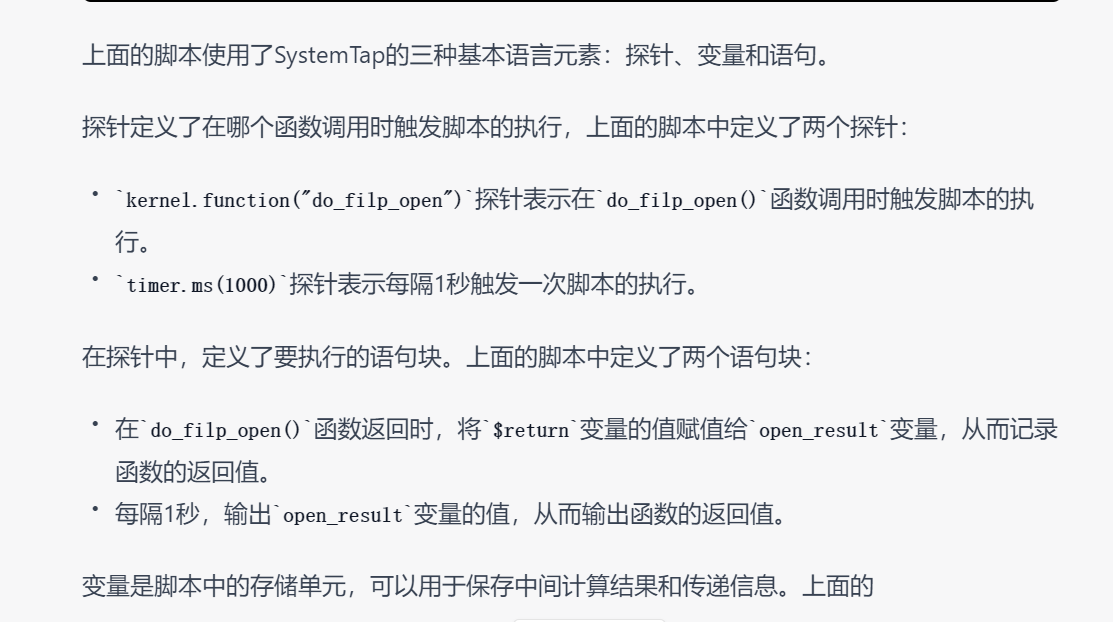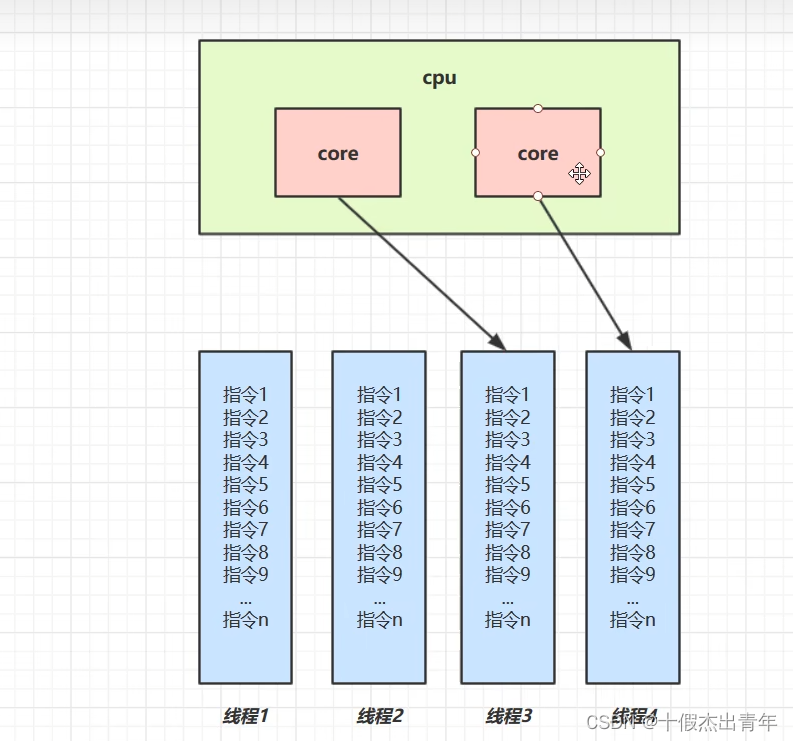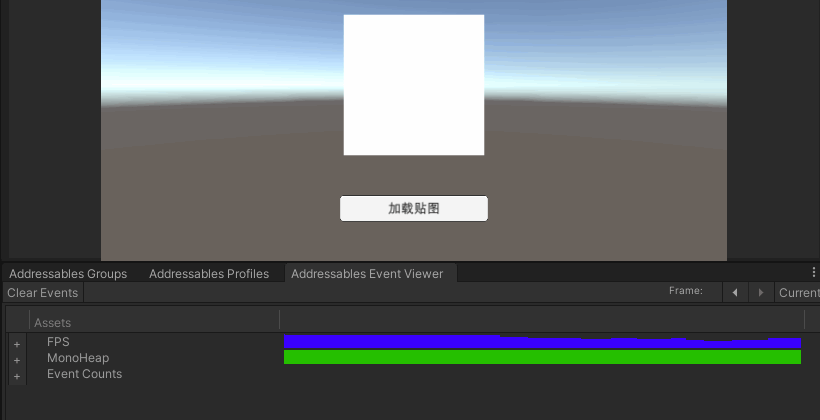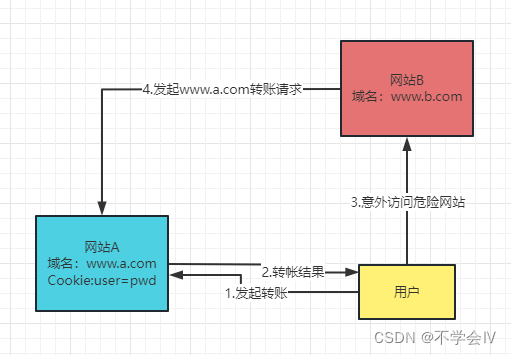题目:Systems engineering of Escherichia coli for high-level shikimate production (ME 2022)
0 前言
- 本版块内容为记录阅读的文献内容总结经典方法手段。
- 本文内容来自相关文献,在文末做来源进行详细说明
- 对文献中内容不做真实性评价。
1 具体内容
Systems engineering of Escherichia coli for high-level shikimate production (ME 2022)
Zhendong Li a,b, Cong Gao a,b, Chao Ye d, Liang Guo a,b, Jia Liu a,b, Xiulai Chen a,b, Wei Song c,
Jing Wu c, Liming Liu a,b,
a State Key Laboratory of Food Science and Technology, Jiangnan University, Wuxi, Jiangsu, 214122, China
b School of Biotechnology, Jiangnan University, Wuxi, Jiangsu, 214122, China
c School of Life Sciences and Health Engineering, Jiangnan University, Wuxi, 214122, China
d School of Food Science and Pharmaceutical Engineering, Nanjing Normal University, Nanjing, 210046, China*
题目:合成生物学工程促进大肠杆菌中莽草酸的高水平积累
分享人:
科学问题:大肠杆菌中如何减弱产物抑制性和代谢竞争并实现大规模发酵?
1. 前沿框架:
第一段:(研究背景)
1)莽草酸的应用场景以及生产价值
2)目前主要生产草酸的工程菌株种类以及具体的产量水平。
3)提出利用大肠生产莽草酸的核心优势。1.明确的代谢改造手段,2.较高的碳代谢转化能力3.较快的生长周期相比于常用的谷氨酸棒杆菌
第二段:(引出研究问题)
E.coli生产莽草酸的主要的三个问题1)碳流代谢竞争影响细胞生长 2)副产物积累影响产物纯净度(下游工艺分离困难)3)产物代谢对生长的抑制4)大规模发酵存在瓶颈。
总结目前主流的解决方法和达到的效果产量,分析过表达策略、关键酶的突变分析、细胞的适应性进化、高通量的定向进化。但这些都是在实验室小型发酵水平进行,缺失大型发酵罐的发酵条件控制问题。
第三段:(本文的研究方法和手段)
研究中主要针对上述问题,提出采用4个方法进行解决问题:1.使用酶约束代谢网络预测分析关键靶点进行敲除和过表达2.对于关键主通路进行代谢表达组合优化,模块化分析总结。3.关键耐受基因的响应调控(能量获取与细胞生长相关,利用渗透压响应开关)4.进行大罐的发酵条件优化(碳补加时间、温度、pH)
2. 逻辑框架:
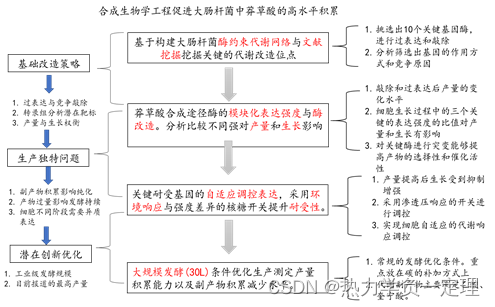
3. 摘要(报道型摘要177字)
【背景与方法句:莽草酸作为一种具有较高工业价值的产品,为了使用微生物发酵法高产莽草酸,本研究采取酶约束网络和改变代谢流向在实验室前期构建菌株TRP0进行工程改造。】To further increase the production efficiency of microbial shikimate, a valuable compound widely used in the pharmaceutical and chemical industries, ten key target genes contributing to shikimate production were identified by exploiting the enzyme constraint model ec_iML1515, and subsequently used for promoting metabolic flux towards shikimate biosynthesis in the tryptophan-overproducing strain Escherichia coli TRP0. 【结果句1:工程改造的初始产量达到78.4g/L】The engineered E. coli SA05 produced 78.4 g/L shikimate via fed-batch fermentation. 【结果句2:通过敲除副产物生成途径降低了奎宁酸的积累与3-脱氢奎宁酸】Deletion of quinate dehydrogenase and introduction of the hydroaromatic equilibration-alleviating shikimate dehydrogenase mutant AroET61W/L241I reduced the contents of byproducts quinate (7.5 g/L) and 3-dehydroshikimic acid (21.4 g/L) by 89.1% and 52.1%, respectively. 【结果句3:采用莽草酸响应的核糖开关动态调控耐受基因促进发酵的持续进行】Furthermore, a high concentration shikimate responsive promoter PrpoS was recruited to dynamically regulate the expression of the tolerance target ProV to enhance shikimate productivity by 23.2% (to 2 g/L/h). 【结果句4:通过发酵优化达到目前报道的大肠杆菌最大的生产强度与积累水平】Finally, the shikimate titer was increased to 126.4 g/L, with a yield of 0.50 g/g glucose and productivity of 2.63 g/L/h, using a 30-L fermenter and the engineered strain E. coli SA09. 【总结句】This is, to the best of our knowledge, the highest reported shikimate titer and productivity in E. coli.

1. Introduction
【背景句:莽草酸的工业和医药用途】Shikimate is a common precursor of pharmaceuticals and industrial products, including the anti-influenza drug Tamiflu® (oseltamivir phosphate) (Nie et al., 2009), aromatic compounds (Arceo et al., 2010), and chiral chemicals (Zhu et al., 2020, 2021).【背景句:目前的主要生产菌株】To date, different host strains including Corynebacterium glutamicum, yeast, and Escherichia coli have been engineered to increase the production of shikimate (Candeias et al., 2018). 【背景句:不同菌株的最高产量存在差异】For example, the highest shikimate titer (141 g/L) was achieved via a growth-arrested cell reaction using C. glutamicum (Kogure et al., 2016), whereas for yeasts, the highest shikimate titer (3.11 g/L) was obtained for Scheffersomyces stipites (Gao et al., 2017). 【承接句:目前大肠产莽草酸存在许多优势4点,易操作、清晰的路径、更快生长、高碳源运转】However, the complex fermentation process and the low titer of shikimate inhibit its industrial production. E. coli is an attractive host for shikimate production because of its easy operation, clear metabolic pathway, fast-growing characteristics, and high carbon uptake rates (Pontrelli et al., 2018; Yan and Fong, 2018; Yang et al., 2020). 【转折句:目前任然存在一些问题限制其工业发酵】However, most of the titer, yield, or productivity of shikimate remain far below the industrial requirements (Gu et al., 2017).
【背景句:目前使用大肠生产莽草酸需要解决的关键问题】There are many challenges associated with the engineering of shikimate-overproducing E. coli strains, including low metabolic flux allocation, competition between carbon flux and cell growth, byproduct formation, and product inhibition. 【背景句:其他人为了研究这些问题提出的关键策略,本句写的不好】To channel more metabolic flux to the shikimate synthetic pathway in E. coli, various strategies, including evolution engineering (Niu et al., 2020), pathway reconstruction (Bilal et al., 2018; Noda et al., 2021), and optimization of enzyme expression and activity (Liu et al., 2016), have been used. 【背景句:其中主要调控手段和关键基因】Among these strategies, the best improvement was achieved in E. coli RB791, where aroF, aroE, and tktA were overexpressed and ptsHIcrr was substituted with glf and glk, leading to the producing 84 g/L shikimate in a 10-L fermentor (Chandran et al., 2003). 【方法句:发酵过程的碳流优化来改善细胞的最大生长水平】To circumvent the carbon flux competition between shikimate production and cell growth, population density-dependent (Gupta et al., 2017) and cell state-dependent dynamic genetic circuits (Gao et al., 2019; Lee et al., 2017) have been developed. For example, a dynamic regulation circuit was designed based on the stationary phase promoter, and proteases were employed to control cell growth at the growth phase and shikimate accumulation at the stationary phase, achieving a shikimate titer of 12.63 g/L in aminimal medium (Gao et al., 2019). 【问题句:代谢副产物也是莽草酸合成需要解决的问题】In most shikimate-overproducing E. coli systems, 3-dehydroshikimic acid (DHS), quinate, and acetate are the major byproducts. Strategies to reduce their formation have focused on the knockout of the corresponding synthase (Niu et al., 2020), the addition of byproduct synthesis inhibitors (Knop et al., 2001), and fermentation medium optimization (Chandran et al., 2003). Among these strategies, engineering byproduct synthetases is the most direct and economically viable strategy. For instance, quinate dehydrogenase deletion reduced the mole yield of quinate by 75% (Niu et al., 2020), while acetate kinase and phosphotransacetylase inactivation reduced the acetate level by 4.6-fold and increased the shikimate titer by 16.3% (Chen et al., 2014). To alleviate the cellular toxicity caused by shikimate accumulation within the cell, transporter engineering was proposed (Knop et al., 2001). Specifically, two presumptive shikimate transporters, ShiA and YdiN, were both knocked out to prevent the shikimate from being reintroduced into the cell for recycling, increasing the shikimate titer by 1.1- and 1.3-fold, respectively, compared with that of the parent strains (Lee et al., 2021). Together, these strategies can efficiently improve the shikimate production in E. coli. However, the shikimate biosynthesis ability of E. coli is still limited by the lack of a rational design of pathway targets, synergistic application of multiple strategies, and iterative fermentation optimization at a large scale.
【总结句:本研究的目的方法和宿主】In the present study, to increase the shikimate production of the tryptophan-overproducing host strain E. coli TRP0, 【方法句1】first, the key gene targets for increasing shikimate biosynthesis were identified using the enzyme constraint model ec_iML1515 (Ye et al., 2020). These targets were then engineered into E. coli TRP0 to produce shikimate. 【方法句2】The accumulation of the quinate and DHS byproducts was markedly reduced via ydiB deletion and protein engineering of AroE, respectively. 【方法句3】Furthermore, a shikimate resistance target was identified using transcriptomics analysis and dynamically controlled by a shikimate responsive promoter to enhance shikimate productivity without causing a metabolic burden to the host. 【方法句4】Finally, the fermentation conditions, including the glucose feed strategy, pH, and temperature, were optimized. Under these optimal conditions, the strain developed in the present study (E. coli SA09) achieved the highest titer (126.4 g/L), yield (0.50 g/g), and productivity (2.63 g/L/h) of shikimate from glucose reported for E. coli strains thus far.
3. Results
3.1. Identification of key targets for shikimate production using the ec_iML1515 model
【目的句:】To identify the key gene targets for reconstructing the shikimate biosynthesis pathway, the protein demand was analyzed using the enzyme constraint model ec_iML1515 (Ye et al., 2020) (Supplementary File 1). 【结果句:筛选出的关键位点】Using E. coli as a chassis and glucose as a substrate, a total of 90 proteins from the simulation database were screened, including seven high-demand proteins and 83 low-demand proteins. 【递进句:进一步明确关键基因】Furthermore, 12 potential targets directly affecting the biosynthesis of shikimate were selected for validation among the screened proteins, based on metabolic pathways, literature survey and predicted fluxes ranking (Supplementary Note 1). 【结果句1:具体的调控基因】These included: (i) Seven high-demand proteins (GlyA, TalB, TktA, AroG, AroD, AroE, and PfkB; increasing their abundance should improve the shikimate biosynthesis) (Fig. 1a); and (ii) Five low-demand proteins that are directly involved in shikimate biosynthesis (PtsH, PtsI, PykF, DhaL, and TpiA; decreasing their expression levels should also increase shikimate production) (Fig. 1b). 【结果句2:】The twelve aforementioned proteins were further divided into four modules according to the metabolic pathway (Fig. 1c): (i) Shikimate core synthesis pathway module: AroG, AroD, and AroE; (ii) precursor phosphoenolpyruvate (PEP) accumulation module: PtsH, PtsI, PfkB, PykF, DhaL, and TpiA; (iii) precursor erythrose-4-phosphate (E4P) synthesis module: TktA and TalB; and (iv) resource supplement module: GlyA, the highest-demand protein involved in the synthesis of purine, thymine, methionine, choline, lipids, and other cellular basic resources. As shikimate is an upstream product of tryptophan, a tryptophan-overproducing strain, obtained by random mutagenesis screening, E. coli TRP0 (Guo et al., 2022), was selected as a chassis to produce shikimate. 【结果句3】 For shikimate accumulation in E. coli TRP0, aroK (encoding shikimate kinase I) and aroL (encoding shikimate kinase II) were both deleted to block the conversion of shikimate to its downstream product tryptophan. The obtained strain E. coli SA01 produced 479 mg/L shikimate under shake-flask fermentation conditions. Meanwhile, the titer of its downstream product tryptophan was significantly decreased to <10 mg/L (Fig. 1d). 【结果句4】These results indicated that the E. coli TRP0 strain was successfully engineered to accumulate shikimate rather than tryptophan, and the obtained strain E. coli SA01 was used as a parent strain for subsequent studies. 【结果句5】Next, the effects of the twelve aforementioned targets were analyzed in E. coli SA01 after via shake-flask fermentation; the overexpression of glyA, talB, aroG, aroD, aroE, and tktA increased the shikimate production by 87.5%, 57.8%, 102.5%, 19.3%, 48.5%, and 45.2%, to 1 g/L, 0.76 g/L, 1.02 g/L, 0.67 g/L, 0.71 g/L, and 0.7 g/L, respectively. Knockout of ptsH, ptsI, pykF, and dhaL increased the shikimate titer by 32.5%, 38.2%, 17.5%, and 19.3% to 0.63 g/L, 0.66 g/L, 0.56 g/L, and 0.57 g/L, respectively. In addition, the overexpression of pfkB had no effect on the shikimate titer, and deletion of tpiA reduced shikimate production by 28.7% (0.35 g/L) (Fig. 1e).
3.2. Reconstruction of shikimate-overproducing
【承接句:改造后产量发生变化,分析主要原因承接后续问题】E. coli Based on the above ten valid target genes, a series of gene manipulation strategies were adapted to increase the shikimate titer in E. coli SA01 with regard to from four aspects: i) accumulation of the PEP precursor, ii) synthesis of the E4P precursor, iii) enhancement of the core pathway enzyme expression, and iv) improvement of the basic resource supply. 【方法句1】First, to increase the PEP content, dhaL, ptsH, and ptsI were deleted in E. coli SA01. Meanwhile, glf (encoding glucose facilitator protein) and glk (encoding glucose kinase) from Zymomonas mobilis were introduced to strengthen glucose uptake. 【方法句2】Furthermore, the native promoter of pykF was replaced with a growth coupling promoter PrrnC (Hou et al., 2020), which could inactivate the transcriptional activity of pykF in the stationary phase to rewire more metabolic flux into the shikimate pathway, finally yielding strain E. coli SA02. 【结果句1】It was observed that E. coli SA02 continuously grew for 18 h before entering the stationary phase in a 5-L fermentor, with the OD600 value peaking at 86 (Fig. 2a), which was decreased by 8.5% compared with that of E. coli SA01. 【结果句2】After 60 h, E. coli SA02 consumed 195 g/L glucose, producing 23.5 g/L shikimate and achieving a yield of 0.12 g/g glucose and a productivity of 0.39 g/L/h, which represented a 1.06-, 1.4-, and 1.06-fold increase compared with those of E. coli SA01 (Fig. 2b). 【方法句3】Second, to increase the E4P content, tktA and talB were overexpressed. According to the in silico calculation using the ec_iML1515 model, the demand for TalB was 2.3-fold higher than that of TktA. 【方法句4】Therefore, extra copies of talB (controlled by the strong promoter PJ23101) and tktA (controlled by the medium-strength promoter PJ23108) were introduced into the E. coli SA02 genome, generating E. coli SA03. 【结果句3】After 60 h of fermentation, cell growth (maximum OD600) was slightly decreased by 6.8% (Fig. 2a) in a 5-L fermentor, but the titer, yield, and productivity of shikimate in E. coli SA03 were increased by 77.9%, 75%, and 79.5% to 41.8 g/L, 0.21 g/g glucose, and 0.7 g/L/h, respectively (Fig. 2b). 【目的句-方法句】Third, to achieve the optimal carbon flux transformation of shikimate core synthesis pathway and avoid growth inhibition, three promoters with different strengths, PJ23119: high expression (H), PJ23105: moderate expression (M), and PJ23115: low expression (L), were employed to control the expression levels of aroGFBR, aroD, and aroE. A total of 27 overexpression cassettes were designed and introduced into E. coli SA03 to identify the optimal combination using shake-flask fermentation. 【结果句4】As shown in Fig. 2c, the shikimate titer (5.8 g/L) of E. coli SA03-7 (aroGFBR[H]-aroE[H]-aroD[L]) was the highest among those of the 27 strains. Subsequently, this expression cassette was integrated into the genome of E. coli SA03, producing E. coli SA04. The fed-batch fermentation of E. coli SA04 in a 5-L fermentor showed that the shikimate titer, yield, and productivity reached 67.2 g/L, 0.35 g/g glucose, and 1.12 g/L/h at 60 h, respectively, increasing by 60.8%, 66.7%, and 60%, respectively, compared with those of E. coli SA03 (Fig. 2b). 【结果句5】Meanwhile, the cell growth (maximum OD600) was further reduced by 10.9%, indicating that AroG transformed more central metabolic flux into shikimate pathways. 【目的与方法】Fourth, to provide enough resources for shikimate biosynthesis by E. coli SA04, the expression level of glyA was examined with different strengths of RBS (RBS10: high strength, RBS09: medium strength, and RBS03: low strength) and repeated expression (single or double copy), and thus, nine strains with different combinations were constructed (Fig. 2d) (Zhang et al., 2018a). 【结果句6】The best combination (RBS09/RBS03 and double copy, E. coli SA04-8) was introduced into the E. coli SA04 genome to obtain E. coli SA05. As a result, the shikimate titer, yield, and productivity of E. coli SA05 in a 5-L fermentor reached 78.4 g/L, 0.37 g/g glucose, and 1.45 g/L/h at 54 h, respectively, which were 16.7%, 5.7%, and 29.5% higher, respectively, than those of E. coli SA04 (Fig. 2b). The total glucose consumption of E. coli SA05 was increased by 8.9%–212 g/L, and the fermentation time was shortened by nearly 6 h, suggesting that the GlyA-mediated resource supply was critical for improving the shikimate titer and productivity (Fig. 2a). 【结果句7:代谢副产物下降】The major byproducts of E. coli SA05 were quinate (7.5 g/L) and DHS (18.5 g/L). In addition, a small amount of acetate was also accumulated (3.2 g/L) (Fig. 2e). 【背景句:副产物积累的主要方式】Quinate accumulation is mainly attributed to quinate dehydrogenase (encoded by ydiB), which catalyzes the conversion of 3-dehydroquinic acid into quinate. The DHS accumulation may be caused by insufficient expression of aroE or by hydroaromatic equilibration (Li et al., 2020). 【目的与方法】To block the carbon flux directed to quinate, the ydiB gene was deleted in E. coli SA05 to obtain E. coli SA06, in which the quinate concentration was decreased by 88.7% to 0.85 g/L and those of shikimate and DHS were further increased to 81.7 g/L and 21.4 g/L, respectively (Fig. 2b and e). To decrease DHS accumulation, the number of copies of aroE was increased. 【转折句:产量提升也导致生长量受到影响】However, the highest cell density was decreased by 11.6% without a significant decrease in DHS concentration (Supplementary Fig. 1), suggesting that the accumulation of DHS is mainly caused by hydroaromatic equilibration; this is, in turn, caused by the redox nature of the AroE enzyme, which is capable of reversely shikimate to generate DHS, thus resulting in the accumulation of this byproduct (Fig. 2f). 【目的与方法:改变酶的选择性采用同源建模进行点突变】To solve this problem, the homology model of the enzyme AroE with the product shikimate and substrate DHS was established (Supplementary Fig. 2). The amino acid residues (5 Å) lining the binding pocket were virtually mutated to the other 19 amino acid residues to calculate the binding energies (Supplementary Fig. 3; relevant data can be found in Supplementary File 2). 【结果句8:】As a result, a total of 12 mutant strains with reduced affinity for shikimate and increased or unchanged affinity for DHS were selected according to the Calculate Mutation Energy (Binding) algorithm (see methods, selection 2.4). Next, the conversion rates of the mutant proteins to shikimate and DHS were detected. As shown in Fig. 2g, only the T61W and L241I mutants met the screening criteria, which reduced the shikimate conversion rates by 29.7% and 43.8%, and increased the DHS conversion rates 7.2% and 3.1%, respectively, compared with those of the wild-type counterparts. The double-mutant AroEL241I/T61W increased the conversion rate of DHS by 8.8% and reduced the conversion rate of shikimate by 51.5% (Fig. 2h). The aroE gene in the E. coli SA06 genome was substituted with aroEL241I/T61W, causing the generation of the E. coli SA07 strain. As shown in Fig. 2b, E. coli SA07 produced 88.5 g/L shikimate with a yield of 0.42 g/g glucose and a productivity of 1.64 g/L/h, which were 12.9%, 27.3%, and 13% higher, respectively, than those of E. coli SA05. Moreover, the quinate and DHS titers of E. coli SA07 were reduced by 89.1% and 52.1% compared with those of E. coli SA05, reaching 0.82 g/L and 10.2 g/L, respectively (Fig. 2e).
3.3. Identification and dynamic regulation of hyperosmotic stress-tolerance gene
【承接句:】It was observed that when the shikimate titer reached 90 g/L, the glucose consumption rate and shikimate productivity of E. coli SA07 significantly decreased by 39.3% and 48.6% (Supplementary Fig. 4) compared with those observed at 80 g/L shikimate.【递进句:细胞生存量进一步下降】 Meanwhile, the cell survival rate was decreased by 46% and the osmotic pressure increased to 2175 mOsmol/L (Fig. 3a). These results demonstrated that the decrease in cell viability caused by hyperosmotic stress probably inhibited the production performance of E. coli SA07; 【方法句:基于耐受环境中转录组差异筛选潜在的目标基因作为靶向调控】therefore, increasing the cell viability may enhance the shikimate titer or productivity. For this purpose, the specific genes in E. coli SA07 responsible for resisting high-concentration shikimate stress were mined using RNA sequencing after this strain was cultured in the presence of 0 and 90 g/L shikimate for 6 h (Supplementary File 3). 【结果句:】Transcriptional profiling revealed that the expression levels of 1761 genes were significantly altered, of which 922 were upregulated and 839 downregulated. 【方法句】Most of these genes belonged to the “metabolism” and “environmental information processing” pathways, based on the KEGG classification (Supplementary Fig. 5). Next, the ten top upregulated genes involved in osmotic stress response were selected (Table S4) and then overexpressed individually in E. coli SA07 to examine its resistance to high concentrations of shikimate. 【结果句:】Among them, the proV overexpression strain (named E. coli SA08) showed the best resistance to 90 g/L shikimate in shake-flask. ProV is a hyperosmotic response protein that transports osmotic protective agent glycine betaine and choline in an ATP-dependent manner to resist hyperosmotic stress; accordingly, we believe that the increased cell viability caused by ProV overexpression is also achieved through this mechanism (Gul and Poolman, 2013). 【结果句:】Compared with those of E. coli SA07, the survival rate, IC50 value, and biomass (final OD600) increased by 52.6%, 19.5%, and 35.3% reaching 87%, 109.4 g/L, and 1.5, respectively (Fig. 3b and c and Supplementary Fig. 6). 【结果句:】Furthermore, the cell morphology observations exhibited that the E. coli SA08 cells displayed a more complete and regular form, compared with the swollen E. coli SA07 cells (Supplementary Fig. 7). 【结果句:】After the fed-batch fermentation of E. coli SA08 in a 5-L fermentor, the shikimate titer, yield, and productivity increased to 100.7 g/L, 0.42 g/g glucose, and 1.71 g/L/h (Fig. 3d), respectively, and the final OD600 value, cell survival, and glucose consumption improved by 11.8%, 61%, and 12.5%, respectively, compared with those of E. coli SA07 (Supplementary Fig. 8). 【转折句:耐受基因的表达影响了生长速率,因此合适的表达时间是重要问题】However, the fermentation time was extended to 59 h (extended by nearly 5 h), which was perhaps caused by proV overexpression, as the cell growth rate of E. coli SA08 was decreased by 34.1% compared with that of E. coli SA07 before entering the stationary phase (Fig. 3e). 【目的句:为了动态调控耐受基因的表达需要进行压力响应型启动子的筛选与构建,实现在特定环境中的表达水平】To relieve the metabolic burden, the expression of proV was designed to be activated only under enough osmotic stress. As osmotic stress can activate the expression of the global stress regulator RpoS, the transcriptional activities of five RpoS promoters (PrpoS, PrpoS1, PrpoS2, PrpoS3, PrpoS4) were examined using mKate as the reporter protein at 0 g/L and 90 g/L shikimate. 【方法句:】 Among these, PrpoS is an experimentally verified RpoS promoter (Lange et al., 1995), while the other four were predicted by 5′ RACE and pyrosequencing (Mendoza V et al., 2009). 【方法句:】The constitutive promoter PJ23119 was designed as the control. 【结果句:】As a result, only PrpoS showed significantly higher mKate fluorescence intensity (7.5-fold increase) at 90 g/L shikimate compared with that of 0 g/L shikimate, indicating that it could be used to dynamically regulate proV expression (Fig. 3f and g). 【结果句:】Subsequently, the expression cassettes of PrpoS and proV were cloned into the E. coli SA07 genome to obtain strain E. coli SA09. In a 5-L fermenter, the titer, yield, and productivity of E. coli SA09 reached 103.3 g/L, 0.46 g/g glucose, and 2 g/L/h at 52 h, respectively, and the productivity increased significantly (by 17%) compared to that for E. coli SA08, suggesting that the metabolic burden was avoided via the stress-driven regulation of the expression of the tolerance gene ProV (Fig. 3h).
3.4. Optimization of shikimate production
【方法句:】Finally, the fermentation conditions, including the glucose feeding strategy, pH, and temperature, were optimized to further improve shikimate production by E. coli SA09. 【结果句】As shown in Fig. 4a, the residual glucose curve presented an “S”-shape: the concentration of residual glucose was low (≤1 g/L) from 12–28 h, after which, it gradually increased to 16.5 g/L at 48 h, leading to acetate accumulation. This trend indicated that the glucose feeding rate was unmatched. 【分析句】Hence, the glucose feeding rate at different stages was optimized, and its curve showed a peak shape: the initial feeding rate was set at 2.5 g/L/h at 12 h, then, gradually increased to the feeding peak of 12.5 g/L/h at 24 h, and finally gradually decreased to 2 g/L/h at 40 h (shikimate titer reached 100 g/L). 【结果句】At 48 h, the shikimate titer reached a maximum of 116.2 g/L, the yield and productivity were 0.47 g/g glucose and 2.42 g/L/h, respectively, and the productivity was significantly increased by 16.3% (Fig. 4b). 【结果句】Moreover, the optimization of the glucose feeding strategy increased the total glucose consumption by 14.3% (238.7 g/L) and reduced the acetate accumulation by 56.5% (3.7 g/L) (Supplementary Fig. 9). 【方法句:】Furthermore, by using a single-factor optimization experiment, it was found that when the pH and temperature of the stationary phase were controlled at 6.7 and 35 ◦C, the titer, yield, and productivity of shikimate could be further increased to 125.9 g/L, 0.50 g/g glucose, and 2.62 g/L/h, respectively (Fig. 4c). 【方法句:】To evaluate the industrial potential of E. coli SA09, its cultivation was scaled up to a 30-L fermentor using fed-batch fermentation. E. coli SA09 continuously grew from 0 to 20 h, reaching an OD600 peak of 80. 【结果句】During the critical production stage (20–32 h), the average productivity of shikimate reached 4.44 g/L/h. At 48 h, the titer of shikimate reached a maximum of 126.4 g/L, with the yield and productivity reaching 0.5 g/g glucose and 2.63 g/L/h, respectively, representing the highest shikimate titer and productivity reported thus far for E. coli. In addition, the DHS, quinate, and acetate concentrations were 14.6 g/L, 1.8 g/L, and 4.1 g/L, respectively, and neither lactate nor succinate were detected (Fig. 4d).
